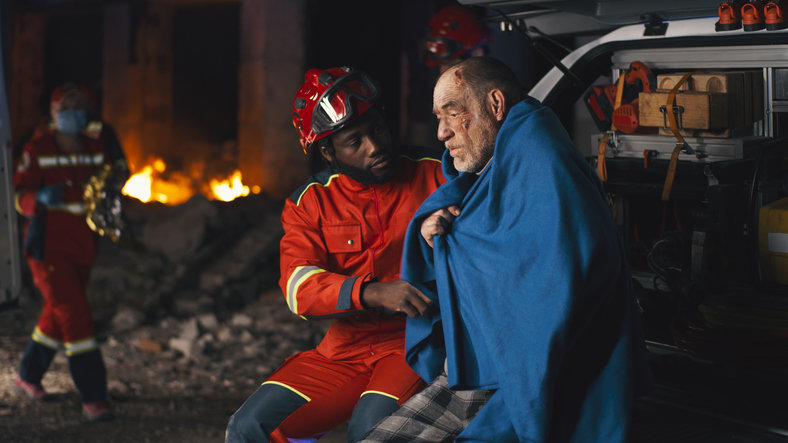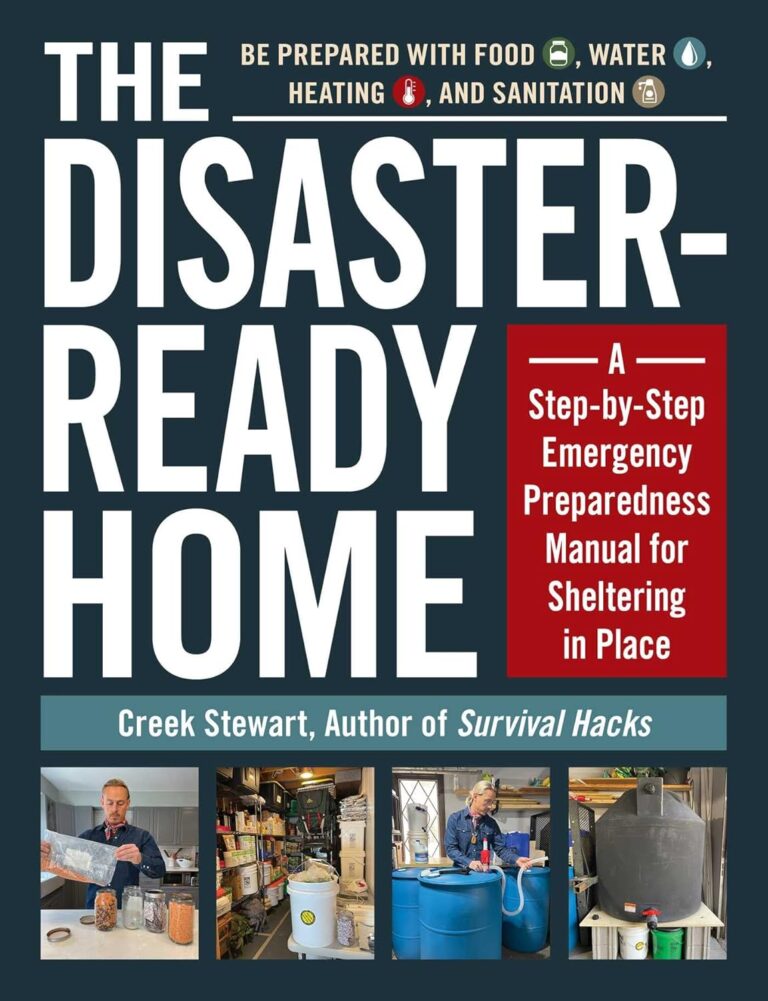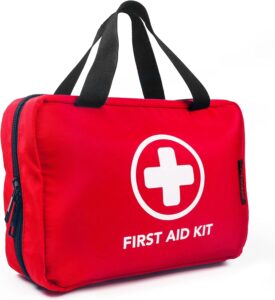
Earthquake Survival Tactics: How to Prepare and Thrive in the Aftermath
Earthquakes can strike without warning, causing destruction in seconds and leaving communities in chaos.
Whether you live in an earthquake-prone area or are simply concerned about potential risks, being prepared is essential to ensuring your family’s safety.
Not only should you know how to protect yourself during an earthquake, but thriving in the aftermath is just as important.
This guide offers essential tips on earthquake survival tactics, focusing on both preparation and how to thrive after the event.
Understanding Earthquakes
What You Need to Know
Before diving into survival tactics, it’s crucial to understand the nature of earthquakes.
What Causes Earthquakes?
Earthquakes occur when there is a sudden release of energy in the Earth’s crust, creating seismic waves. These waves cause the ground to shake, often resulting in significant damage depending on the quake’s magnitude and proximity to populated areas.High-Risk Areas
Regions near tectonic plate boundaries, such as California in the United States, Japan, and parts of Chile, are more susceptible to earthquakes. Even if you don’t live in one of these areas, it’s important to stay informed, as earthquakes can occur in less likely places.Recognizing Warning Signs
While earthquakes often strike without notice, sometimes small tremors or unusual animal behavior can indicate that a larger quake is coming. However, relying solely on warning signs isn’t enough—you need to be prepared at all times.
Earthquake Preparedness
Essential Steps to Take Before Disaster Strikes
Preparation is key when it comes to surviving an earthquake. Here’s what you can do now to protect your family and home.
1. Home Safety Measures
Making your home earthquake-ready can prevent injuries and save lives. Take these steps:
Secure Furniture and Appliances
Heavy furniture like bookshelves, cabinets, and appliances can topple over during an earthquake. Anchor them to the wall using safety straps or brackets to prevent accidents.Install Seismic Gas Shut-Off Valves
Earthquakes can cause gas lines to rupture, increasing the risk of fires. Installing a seismic gas shut-off valve ensures that your gas supply is automatically cut off during a quake, reducing this hazard.Create an Emergency Escape Plan
Discuss and rehearse an escape plan with your family. Identify safe exits and routes and make sure everyone knows where to meet outside in case you’re separated.Know Safe Spots in Your Home
In the event of an earthquake, it’s important to know where to take cover. Safe spots include under sturdy tables or against interior walls away from windows, which can shatter.
2. Emergency Kit Essentials
Assemble an emergency kit with enough supplies to last your family at least three days. Here’s what you’ll need:
- Water: 1 gallon per person, per day.
- Non-perishable food: Canned goods, protein bars, and dried foods.
- First-Aid Kit: Include bandages, antiseptic wipes, and pain relievers.
- Flashlights and Extra Batteries: Power outages are common during and after earthquakes, so keep multiple flashlights handy.
- Whistle: To signal for help if trapped.
- Personal Safety Items: Dust masks, gloves, and protective eyewear.
3. Communication Plans
When phone lines are down, communication becomes difficult. Prepare by:
- Establishing an out-of-area contact whom everyone can check in with.
- Using text messages instead of phone calls, as they often go through when networks are overwhelmed.
- Identifying meeting points both near your home and in your community where your family can reunite.
What to Do During an Earthquake
Staying Safe in the Moment
When an earthquake hits, every second counts. Knowing what to do during the shaking can mean the difference between safety and injury.
1. Drop, Cover, and Hold On
- Drop: As soon as you feel shaking, drop to your hands and knees to prevent being knocked over.
- Cover: Get under a sturdy piece of furniture, like a table, to protect yourself from falling debris. If no shelter is available, cover your head and neck with your arms and seek shelter by an interior wall.
- Hold On: Hold onto your shelter until the shaking stops.
2. What Not to Do
Avoid these common myths:
- Don’t Stand in a Doorway: Contrary to popular belief, doorways are not the safest places during an earthquake. You’re better off under a sturdy table or desk.
- Don’t Run Outside: Running outside increases your risk of injury from falling debris. Stay inside and find a safe spot to take cover.
3. Special Situations
- In a Car: Pull over to a safe area away from buildings, trees, and overpasses. Stay inside your vehicle until the shaking stops.
- In an Elevator: If you’re in an elevator during an earthquake, hit the button for every floor and get out as soon as it stops at the nearest level.
- Outdoors: Move to an open area away from buildings, trees, and streetlights.
Surviving the Aftermath
Staying Safe and Thriving After an Earthquake
Once the shaking stops, the danger isn’t over.
Aftershocks, damaged infrastructure, and emotional stress can complicate recovery efforts. Here’s how to navigate the aftermath.
1. Assessing Damage and Ensuring Safety
Inspect Your Home for Damage
After the earthquake, carefully inspect your home for structural damage. Look for cracks in walls, broken windows, and other signs of instability. If your home is unsafe, evacuate and wait for professional assessment.Check for Gas Leaks
If you smell gas or hear a hissing sound, shut off the gas supply immediately and leave the area. Gas leaks can be deadly if not addressed promptly.Avoid Aftershocks
Earthquakes are often followed by aftershocks, which can cause further damage. Stay away from damaged buildings and be cautious of falling debris.
2. Staying Connected
Communication is crucial after a disaster:
- Use texting and social media to communicate with loved ones, as phone lines are often down or congested.
- Tune in to emergency broadcasts for updates on rescue operations and community shelters.
- Coordinate with neighbors to share resources and stay informed about local hazards.
3. Dealing with Trauma
The emotional toll of surviving an earthquake can be overwhelming. Here’s how to manage:
- Acknowledge Your Feelings: It’s normal to feel fear, anxiety, or sadness after a traumatic event.
- Seek Support: Talk to friends, family, or a mental health professional about your experiences.
- Stay Active: Keeping busy with cleanup efforts or volunteering in the community can provide a sense of purpose and help you cope with stress
Long-Term Recovery
How to Rebuild and Stay Resilient
After surviving the immediate aftermath, it’s time to focus on rebuilding your life and home.
1. Rebuilding Safely
- Hire Professionals: Work with licensed contractors to repair or rebuild your home. Make sure they follow local building codes designed to withstand future earthquakes.
- Document Everything: Take photos of damage for insurance purposes and keep records of any repairs made. This will make it easier to navigate the claims process.
2. Building a More Resilient Home
As you rebuild, consider making improvements that will protect your home from future earthquakes:
- Retrofitting: Reinforce your home’s foundation with seismic retrofitting techniques like bolting the frame to the foundation or adding steel bracing.
- Earthquake Insurance: In high-risk areas, earthquake insurance is a smart investment. It can help cover the cost of repairs that regular homeowner’s insurance won’t.
3. Emotional and Financial Recovery
- Addressing Emotional Trauma: Coping with the mental toll of an earthquake is a long-term process. Encourage open communication within your family and seek professional counseling if needed.
- Financial Planning: Rebuilding after a disaster can be expensive. Work with a financial advisor to budget for repairs and explore government aid or disaster relief programs.
Conclusion
Earthquake survival is about more than just making it through the shaking—it’s about being prepared, protecting your family, and thriving in the aftermath.
By following these earthquake survival tactics, you can safeguard your home and community, ensuring you’re ready for whatever comes next.
Make sure to share these tips with friends and family, and download our Earthquake Preparedness Checklist to start taking action today.
Sources:
Understanding Earthquakes: What You Need to Know
- “Seismic waves are caused by the sudden release of energy in the Earth’s crust, leading to ground shaking.” Source: United States Geological Survey (USGS), “Earthquake Hazards Program.”
https://www.usgs.gov/programs/earthquake-hazards
- “Seismic waves are caused by the sudden release of energy in the Earth’s crust, leading to ground shaking.” Source: United States Geological Survey (USGS), “Earthquake Hazards Program.”
Home Safety Measures
- “Securing heavy furniture, such as bookshelves and appliances, can significantly reduce injuries during an earthquake.” Source: Federal Emergency Management Agency (FEMA), “Earthquake Safety Checklist.”
https://www.fema.gov/media-library
- “Securing heavy furniture, such as bookshelves and appliances, can significantly reduce injuries during an earthquake.” Source: Federal Emergency Management Agency (FEMA), “Earthquake Safety Checklist.”
Emergency Kit Essentials
- “Experts recommend keeping at least 1 gallon of water per person per day for a minimum of three days during an emergency.” Source: American Red Cross, “Disaster Preparedness Kit.”
https://www.redcross.org/get-help/how-to-prepare-for-emergencies/survival-kit-supplies.html
- “Experts recommend keeping at least 1 gallon of water per person per day for a minimum of three days during an emergency.” Source: American Red Cross, “Disaster Preparedness Kit.”
What to Do During an Earthquake
- “The ‘Drop, Cover, and Hold On’ technique is widely recognized as the safest course of action during an earthquake.” Source: ShakeOut Earthquake Drills, “Earthquake Safety Tips.”
https://www.shakeout.org/dropcoverholdon/
- “The ‘Drop, Cover, and Hold On’ technique is widely recognized as the safest course of action during an earthquake.” Source: ShakeOut Earthquake Drills, “Earthquake Safety Tips.”
Assessing Damage and Ensuring Safety
- “After an earthquake, check your home for signs of structural damage and gas leaks to prevent further hazards.” Source: California Earthquake Authority (CEA), “Post-Earthquake Safety Tips.”
https://www.earthquakeauthority.com/
- “After an earthquake, check your home for signs of structural damage and gas leaks to prevent further hazards.” Source: California Earthquake Authority (CEA), “Post-Earthquake Safety Tips.”
Building a More Resilient Home
- “Seismic retrofitting is one of the most effective ways to strengthen a home against future earthquakes.” Source: National Earthquake Hazards Reduction Program (NEHRP), “Guide to Earthquake Safety.”
https://www.nehrp.gov/
- “Seismic retrofitting is one of the most effective ways to strengthen a home against future earthquakes.” Source: National Earthquake Hazards Reduction Program (NEHRP), “Guide to Earthquake Safety.”
Emotional and Financial Recovery
- “Earthquakes can take a significant emotional toll, and seeking mental health support is essential for long-term recovery.” Source: American Psychological Association (APA), “Managing Your Mental Health After a Natural Disaster.”
https://www.apa.org/topics/disasters-response/recover
- “Earthquakes can take a significant emotional toll, and seeking mental health support is essential for long-term recovery.” Source: American Psychological Association (APA), “Managing Your Mental Health After a Natural Disaster.”
If you live in a hurricane zone, learn more.

